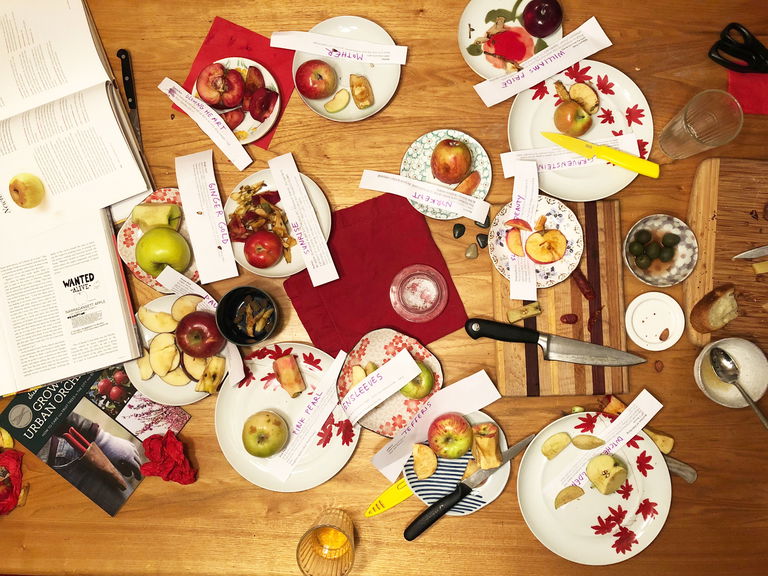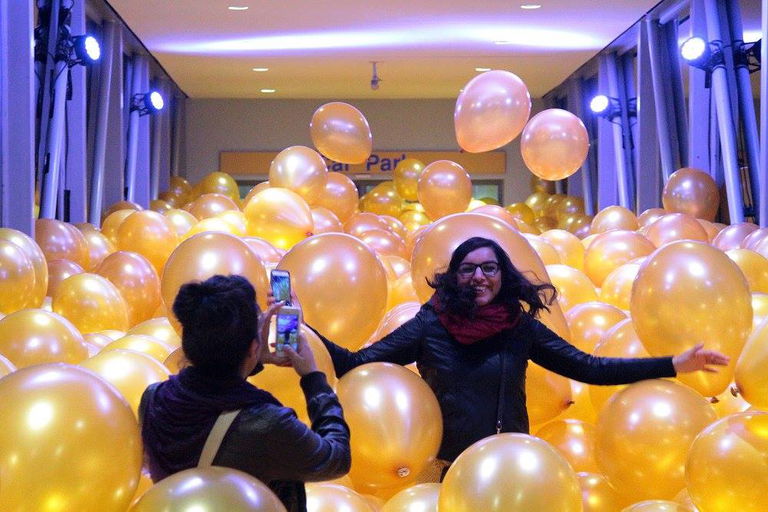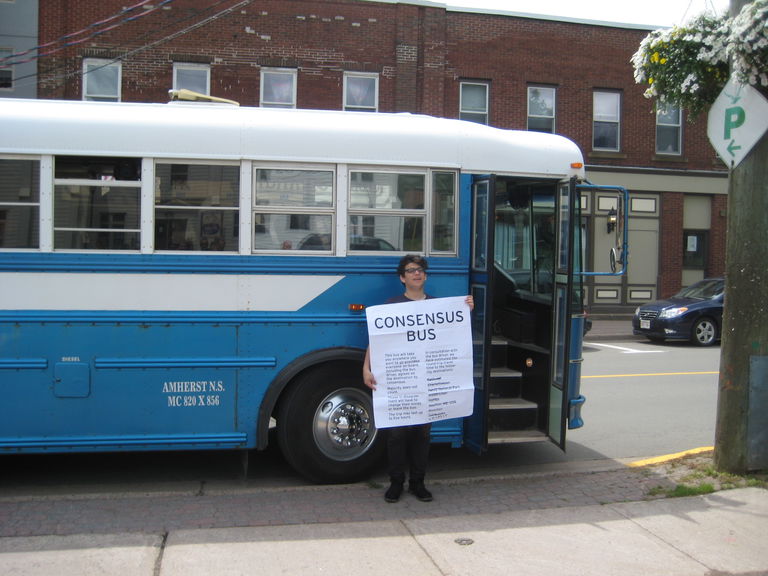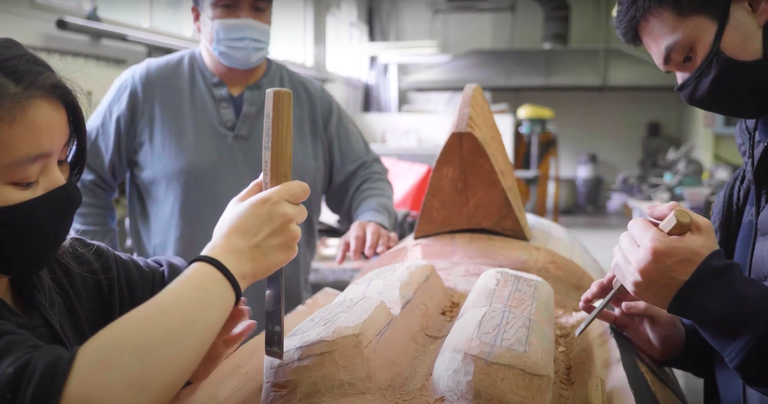
Putting in the Time - investigations in participation
Dave Dyment
Aug 22, 2019
When the Executive Director of Ontario Culture Days Ruth Burns and I first met to discuss an exhibition to celebrate the tenth anniversary of the organization, we discovered some shared objectives. We wanted to honour the history of their previous programming, but also cast a critical eye towards what it means to program interactive public art for a broad, general audience. The works would be faithful to the Culture Days mandate (free, family-friendly, accessible) while attempting to tackle these parameters as actual themes in the works themselves.
Ruth and I had worked together on Edmonton’s inaugural Nuit Blanche, where we presented Jon Sasaki’s Bouncy Highrise, soccer matches held on Priscilla Monge’s very wonky Soccer Pitch field, a work with thousands of balloons by Martin Creed, and the largest iteration of Yoko Ono’s classic Wish Tree. The works were smart, playful, accessible and fun, and sat along others which were more quiet and contemplative.

I can be skeptical about “participatory” artworks, particularly when the participation doesn’t amount to much, or when the convivial spirit of a work masks its lack of content. There’s often the risk of anodyne, feel-good events of little consequence, or that lack actual true empowerment for the participants. Interactivity becomes a buzzword, and maybe a button to press.
Presented with partners across the province, the works in DO BLUE BUTTERFLIES EAT PARTS OF THE SKY? would not just be collaborations, but would be about collaboration, about agency, about participation, about the engagement of different communities.
The first artist I approached was Diane Borsato, whose practice often involves collaboration with outside parties. She has worked with bee keepers, mychologists, tea sommeliers, astronomers, physicists and countless other experts. She told me about an apple orchard she wished to plant as a public sculpture. She had befriended an orchardist named Bill O’Keefe in Dobbinton, Ontario, with incredibly rare apple trees, many of which could feasibly be the last of their kind. We met and tasted some eccentric varietals she had him courier to her. The kind of apples that are not grown commercially, but kept alive by dedicated enthusiasts: apples with black skin or red flesh; apples with unusual shapes; apples that taste like other fruit; apples with the appearance of claw marks.
Borsato’s Orchard will be a discreet living sculpture, a museum of heritage trees. The Culture Days event YOU ARE A GOOD APPLE, taking place at the Small Arms Inspection Building in Mississauga, will be a free public Apple Fair, with apple-tasting, a conversation between Borsato and O’Keefe, Syrian Apple Cake catered by Newcomer Kitchen, and more.

Alex Snukal’s Consensus Bus will be co-presented with partners in Newmarket, Brockville, and Bancroft. The work consists of rented buses which will take anyone wherever they wish to go - for free - provided that all of the other passengers are in agreement. Unlike many socially-engaged works, which quickly devolve into just another social gathering, the subject at the heart of Consensus Bus is consistently foregrounded. I first presented this work nine years ago, in Sackville, for the OK Quoi Festival. I learned more about the complicated nature of ‘consensus’ in the five days on that bus than in all my previous years of attempted compromise. The project is not merely representative of consensus, it’s a functioning practical model.
Snukal, though, was never fully happy with this first iteration, and has decided to further strengthen the notion of consensus by removing himself entirely from the proceedings this time around. The passengers will make their cases, and negotiate with each other on entirely self-guided tours.
The film will be shown without its image, and the recorded audio descriptions will been woven into the existing soundtrack of the film. The event will be a “relaxed screening”, in a casual and low-stimulation environment. People of all ages are welcome and are encouraged to do what they need to be comfortable (including moving, leaving and returning, vocalizing and stimming).

Darren O’Donnell has described children as “the last definable demographic to whom it’s still legal to discriminate”. His theatre company Mammalian Diving Reflex, which aims to “bring people together in new and unusual ways”, has worked with school kids for over a decade. Their projects together are always collaborative, and aim to challenge the very concept of empowerment. Ontario Culture Days will be presenting the most celebrated of these projects, Haircuts by Children. The work has been performed around the world, but not in O’Donnell’s home-province for well-over a decade.
Haircuts by Children is exactly what it sounds like. Participants are offered the chance to have their hair styled and cut, for free, by children. Mammalian Diving Reflex meets with the kids in the weeks leading up to the event and they are given the training and tools to become hairstylists for the day, and the kids proceed in earnest. Haircuts by Children is not a performance about the empowerment of children; for a brief moment, it is empowerment.
Kelly O’Brien’s film, How Does Life Live, featuring her young daughters is not so much a work about her children, but one made in collaboration with them. While the two girls run and play, the voice-over features the youngest posing a series of questions that she has previously asked her mother. Early in the work we hear O’Brien and her daughter Willow discussing the conceit. These are not random questions in the moment, but a series of queries collected over time and re-staged for the film. Willow is reading a script in a way, but one that she inadvertently wrote over a long period, driven by her own curiosity.
After the initial conversation we no longer hear O’Brien’s voice, just the edited audio of a child trying to process the world, with a rapid succession of endless questioning. “Why do boys cut their hair?” “Why do trees just stand there?” “How do you be a mermaid, Mom?”. Some of my favourites address culture directly: “Why are some things special?” “Why do you like beautiful things so much?”
The questions are sometimes naive, poetic, curious, wide-eyed and periodically profound.
UPDATE: Read about Dave’s reflections on “Do Blue Butterflies Eat Parts of the Sky”, after it all occured, here.
Dave Dyment is an artist, writer and curator born in Ontario and recently relocated to New Brunswick. He wishes to thank Ruth Burns and Meaghan Froh Metcalf and the staff at Ontario Culture Days for their tireless dedication to ensuring that these projects come to fruition. And also to Tina Fance, Marie-Louise Gay and Roula Partheniou.






